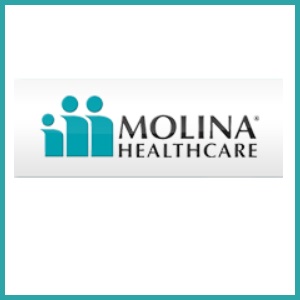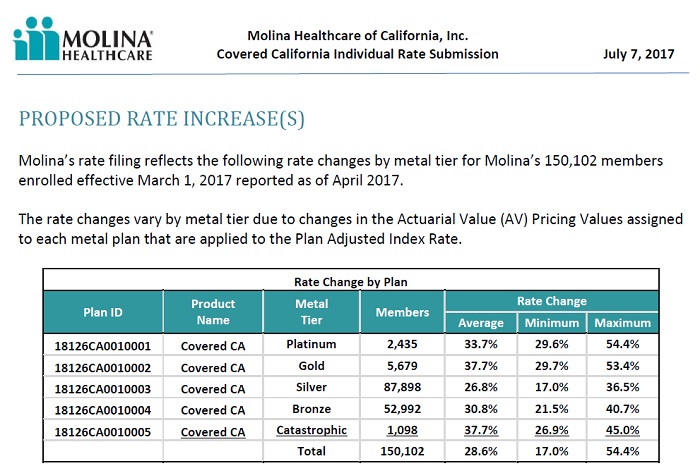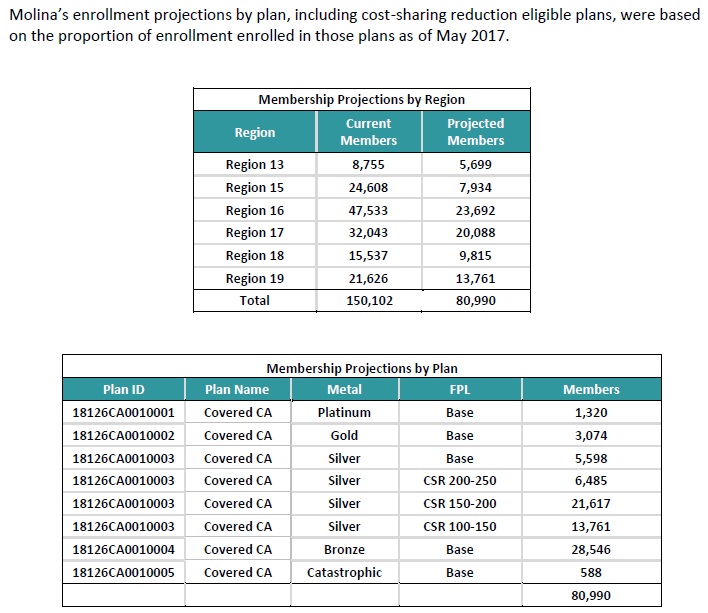
Molina Healthcare
While Covered California has not released the specific health insurance premiums by carrier for 2018, their preliminary rate booklet does give some details as to the rate increases. Molina health plans for individuals and families will increase rates anywhere from 20% up to 51%. The largest Molina rate increases will occur in Region 15 of Los Angeles County and will be between 35% to 51% for 2018.
Molina Has Largest Rate Increases For 2018
If you review the 2018 Covered California rate booklet, which doesn’t actually have any rates in it, you notice that many of the carriers are having modest rate increases. Most of the rate increases are around 10% or less. Some carriers such as Blue Shield, Health Net, and Oscar are dropping rates in some regions. What jumped out at me was Molina which was identified as having rate increases at a minimum of 16% and up to 51% in the regions they offer health plans.

In most of the regions that Molina is offering health plans for 2017 they were usually the first or second lowest cost Silver plan offered. The only other carrier that will have rate increases as high or higher is Anthem Blue Cross. But Blue Cross is pulling out of most of California and will only offer plans in Region 1, 7, and 10. Blue Shield will also be hiking up rates. In general, many Blue Shield consumers will see a 20% rate increase according to the Covered California rate booklet.

Molina 2018 rate increases on individual and family plans by metal tier.
In Molina’s rate filing with the Department of Managed Health Care (DMHC) they actually state that some of their Gold and Platinum plans will see rate increases of 53.4% and 54.4% respectively. These maximum rate increases will be specific to certain ages and regions. Without the actual rate sheets, which were not attached to the online DMHC rate filing, we don’t know who will get hit the hardest.
The reasons for the rate increases were outlined by Molina in their rate filing, which begins on page 49 of the DMHC rate filing Initial PDF Pipeline.
- The single risk pool claims experience emerged at a higher level than what was assumed in the rate development of the current [2017] rates.
- The risk transfer payments are expected to emerge at a higher level than what was assumed in the rate development for the current [2017] rates.
- Molina trended the experience period claims at a 6.5% annualized trend rate.
- Molina applied a durational factor in consideration of higher utilization for members in their second year compared to their first year as fewer first year members are anticipated in the projection period compared to the experience period.
- A risk and contingency margin is added to our premiums to account for the increased risk and volatility associated with the line of business.
- The return of the Health Insurer Fee, after the one year moratorium expiration, increased our proposed rates.
Molina’s 2017 rates were partly based on claims experience from 2015 and 2016. Molina’s share of the individual and family market grew in 2017 as consumers moved from higher priced plans such as Blue Shield and Blue Cross.

Molina projected membership in Covered California plans by region and metal tier.
Molina also summarized their rational for the rate increases on the last page of the DMHC filing, Part II: Explanation of the Rate Increase Effective January 1, 2018
1. Scope and range of the rate increase: Molina’s proposed rates represent an average rate increase of 28.6%for the 150,102 Molina members enrolled effective March 1, 2017. The proposed rate changes vary by metal tier. Members would receive premium increases ranging from 17.0% to 54.4% depending on their geographic location, metal tier, and age. A few members will receive premium increases near the upper end of the range due to a federally prescribed change in the age rating factors for members under the age of 21.
2. Financial experience of the product: Premium of $315 per member per month was received for 2016 compared to allowed claims of $184 per member per month and risk transfer payments of $132 per member per month. Molina’s financial experience in 2016 was worse than anticipated, resulting in a gain of 0.5 percent.
The proposed premium rates yield a medical loss ratio of 83.2 percent. The medical loss ratio represents the percentage of every premium dollar that Molina expects to spend on medical expenses and improving health care quality for our members. The projected medical loss ratio of 83.2 percent exceeds the Affordable Care Act minimum required loss ratio of 80 percent.
3. Changes in Medical Service Costs: Medical inflation related to the utilization and cost of covered services increased rates by 6.5 percent. Increases in the risk adjustment transfer payments related to statewide premium increases and changes in the morbidity of the population resulted in an increase to the rates.
4. Changes in benefits: Molina is renewing all of its plan offerings from 2017, with the standard benefits chosen by Covered California.
5. Administrative costs and anticipated profits: The Health Insurer Fee will return, after a one year moratorium. Targeted profit margin remained constant at 3 percent.
Molina may still be the best health insurance plan for many existing and new consumers even with the rate increases. If the rate increases result in Molina being the Second Lowest Cost Silver Plan, upon which the Premium Tax Credit monthly subsidy is based, it will mean all consumers in that region who have Molina available to them will see an increase in their monthly subsidy. However, for those folks being hit with a 50% rate increase from Molina in the Gold and Platinum plans, they should certainly do some shopping for the 2018 plan year.
Molina_2018_Rate_Filing_DMHC_1504728094966
Molina 2018 IFP rate filing Initial PDF Pipeline with California Department of Managed Health Care.
CoveredCA_2018_Plans_and_Rates_8-1-2017
Covered California rate book for plans offered in the 19 different regions of the state by age for 2018


